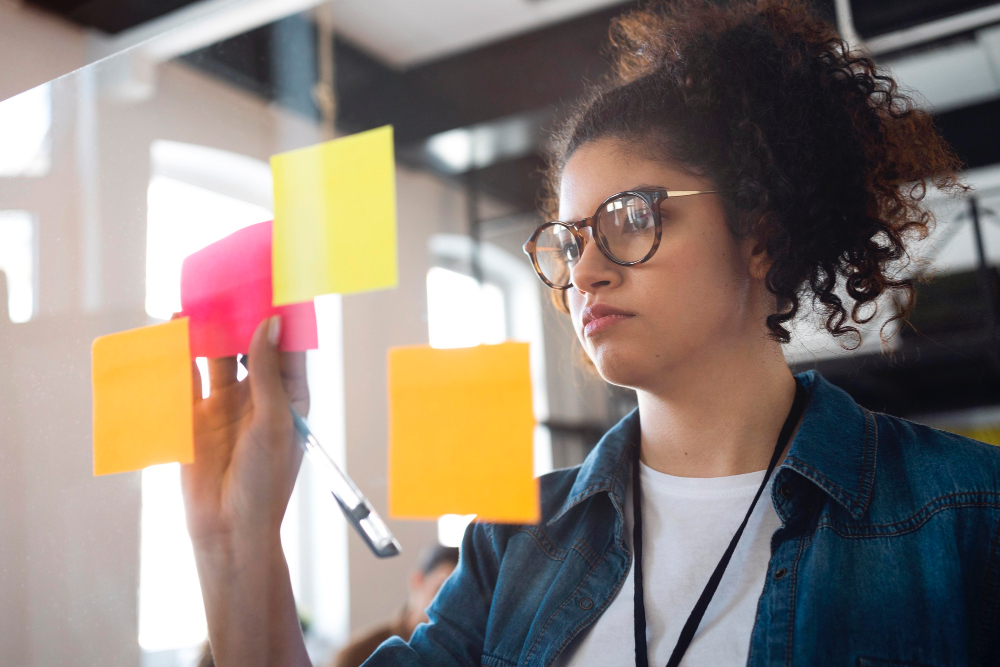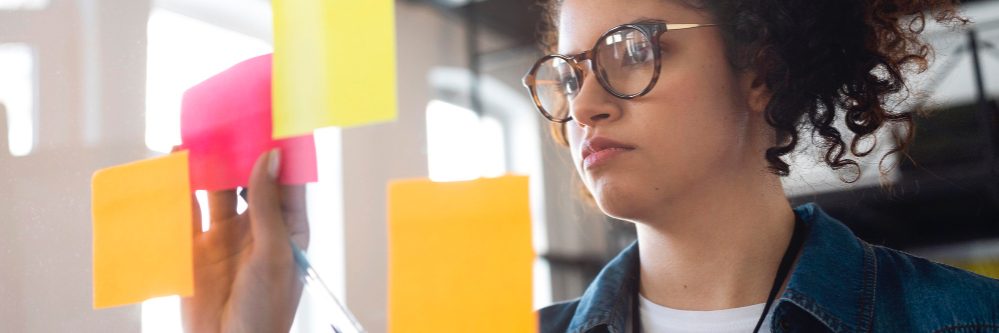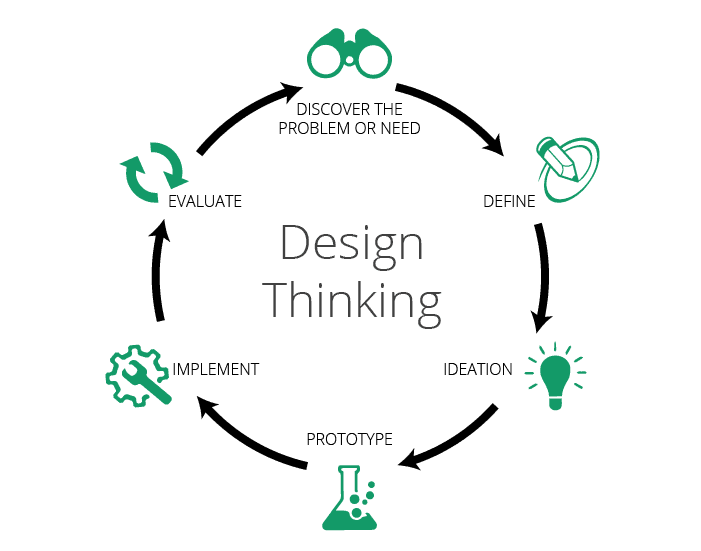An Introduction to Design Thinking
By Team Arrk |
|
6 mins read |

Have you ever tried arranging and rearranging the furniture in your home until the time you and your family think it is perfect? No doubt you would have had discussions with your spouse, identified open spaces, the existent / non-existent furniture items and so on.
Maybe you have been through the process of shortlisting a place to go on holiday with your family. Just think of the many choices that got debated, the research undergone, phone calls, emails, exciting discussions about where to stay, what to eat, what to do, and what not to do. It probably started with an idea, got heatedly discussed in family circles before you and your family packed bags and made the trip.
Well, that process you undertake as part of furniture re-arrangement or before the trip is design thinking for you.
Design thinking not only helps to solve complex but simple problems as well. The concept is universal and applicable in all instances. In the software development world at Arrk, we employ design thinking in more ways than one. First though let us try to understand the concept before getting into its implementation at Arrk.
What
Design thinking is a mindset that stimulates the creative and analytical process for experimenting new ways to empathise, prototype, implement and redesign a model based on assimilating new ideas into an existing cognitive structure or solution until it satisfies its purpose/usage. In simplistic terms, Design Thinking is human-centered creative problem solving.
Why
The Design Thinking process is driven by a need for radical change with innovation being at its core; a phenomenon central to what many organisations are attempting or experiencing. Design thinking can be applied to any organisation irrespective of size or industry, to potentially create breakthrough innovations by conceiving intelligent ways of working and identifying latent needs.
As organisations are integrating themselves horizontally with support from technology, to enable more cross-functional collaboration and mobility; design thinking can help create an environment that fosters different ways of working which are more engaging, transparent, faster, and efficient.
End users of the product or services too need their interaction with the system to be sensible, intuitive, and pleasurable, irrespective of the simple or complex business environment.
Framework
Design thinking is something inherent that we need to absorb in our thoughts whenever we address a problem and attempt to determine a novel solution. The process of innovation starts with defining a problem or need and concludes with a probable outcome that can well be the final solution or just a basis to iterate and experiment further.
Discover the problem or need
Interviewing customers and end-users provide valuable insight into their needs and requirements besides information. The creation of personas to complement this activity is a focused step in the right direction.
People reveal more through their behaviours in a context they identify with than they would in a survey. Also, atypical users if observed offer unique viewpoints that are not captured in a focus group of average users. Observing at ‘Gemba’ (a Japanese term for the work place) provides a veritable list of common areas of improvements and challenges faced by the people. It is important to understand unarticulated and latent desires of the users by taking a broad ‘systems approach’ to the problem.
Define
Definition implies expressing the cases or stories based on the observations and specifications covering both said and unsaid needs. Note taking and its study set the course to expand thinking and look for probable solutions.
Ideation
The process of ideation ensures that problems and their likely solutions are discussed with a group or individuals to empathise, focus and track the feedback(s). This is also undertaken to understand how people assign functional and emotional meaning to the product or services they use and/or assign new meaning to those which will satisfy their latent need. Solutions identification can involve out-of-box or breakthrough ideas to add value to the product or service. Technical feasibility, economic viability and financial propositions should be done such that the proposed solution is suited to the context, that it’s affordable to users and is capable of generating healthy returns.
Prototype
Prototypes even if crude and generally of a throwaway kind are a powerful tool to visualise and helps ideas progress towards the desired outcome.
Implement
Taking things a step further than Prototype, here a working model is evaluated by the end user as part of experience sharing. The implementation can be done on a pilot basis, is generally iterative with a few users and A/B testing can also be resorted to.
Evaluate
This stage focuses on observing and eliciting user feedback to improve the working model. This loops into the discovery phase for further refined changes to the proposed solution / model until it solves the problem and satisfies the end-user need.
How we do it at Arrk
Our rapid and iterative requirements discovery-cum-implementation program at the customer workplace, which we call EmbArrk, epitomises the usage of design thinking at its best to ensure that it delivers a win-win for both Arrk and the customer.
Borrowing heavily from design thinking the elements of innovation and close engagement with the end-user, we create personas, observe users naturally (what they do and don’t), part take in first hand discussions from the customers, create user stories (to form basis for the solution that gets delivered later) and empathise closely with the customer’s needs and expectations.
Also, the presence of function experts, usage of innovative games, sticky notes, story-maps on walls, prototypes backed usability tests ensures free-flowing exchange of creative thoughts aided by visual optics. The customer gets a first-hand view of the overall solution, evaluates the solution being developed and happily directs the course to take towards successful implementation.
Design thinking is not limited to our EmbArrk service either, here are a few more examples of when it is employed at Arrk:
- A developer/tester wanting to resolve a problem in their project calls for a brainstorming meeting with peers to find the best solution be it from amongst a choice of technical options, tool to use, strategy to adopt, or indulge in plain ideation.
- A tester representing the test approach/strategy in mind-map form (instead of in a document form) to help free, non-linear thinking and faster reviews.
- Agile Ceremonies which employ innovation games or similar to open up thinking in a fun-happy team environment to achieve the outcome be it story details, estimates, analysis, improved processes, better social interactions and so on.
- Communities formed within Arrk (comprising people cutting across functions/projects) which work, study, debate as a collective group to arrive at better conceptual understanding, devise better solutions or better ways of working.
- Quality Assurance (process improvement related) as a function being ingrained into the project and undertaken by project members themselves to check and ensure effective and efficient outcomes within the team is also a design thinking experiment.
Summary
Design thinking allows anyone to view a problem from a different perspective. It encourages innovative thinking and creative ways to solve a problem. Continuous improvement ensures that the final outcome solves the problem or satisfies the need. Overall it becomes a focal point of innovation, to reduce costs, improve performance and to change mindsets to handle impediments in a most creative and effective way.









